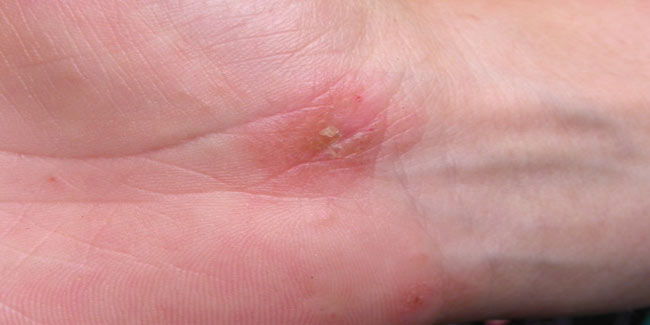
Epidermolysis bullosa is a collective term used to describe around 30 inherited skin disorders that cause blisters or mucous membranes on the skin making it more fragile. Epidermolysis refers to the shedding of the epidermis and bullosa refers to the formation of blisters on the skin, usually on the hands and feet. People with epidermolysis bullosa can easily develop painful and discomforting blisters on the skin after any trouma, scratch or friction. The blisters usually do not leave any scars.

Types of Epidermolysis Bullosa
All the Epidermolysis bullosa disorders can be categorised into three types depending on the layers of skin the blistering takes place.
Epidermolysis bullosa simplex:
This is the most common type of Epidermolysis bullosa and it involves blisters on the epidermis layer of the skin. It is usually milder than the other two types however it is more common. It accounts for around 70% of total epidermolysis bullosa cases.
Dystrophic epidermolysis bullosa:
This type of epidermolysis bullosa involves blistering between the basement membrane zone and the upper part of the dermis layer of the skin. It is less common than epidermolysis bullosa simplex and accounts for around 25% of all cases.
Junctional epidermolysis bullosa:
This is the least common type of epidermolysis bullosa and account for only 5% of cases. It involves blistering at the basement membrane zone between the epidermis and the dermis layer of skin. Altough this is the least common type, it is the most severe one.
Epidermolysis bullosa is a rare condition and one. However anyone can have the condition and the symptoms first appear in babies. Epidermolysis bullosa is usually inherited through faulty genes from one or both parents. A child may develop the condition even when neither of the parents has the condition. However, even in such cases the parents carry the faulty genes without developing the condition.
If anyone in the family has the condition of external form you can get them profession medical care for the condition. The treatment involves protective dressings to prevent infection and any complications. It allows the wounds to heal.
Image Courtesy : Getty
Read more articles Understand Epidermolysis Bullosa
Read Next
How common is Parry-Romberg Syndrome
How we keep this article up to date:
We work with experts and keep a close eye on the latest in health and wellness. Whenever there is a new research or helpful information, we update our articles with accurate and useful advice.
Current Version